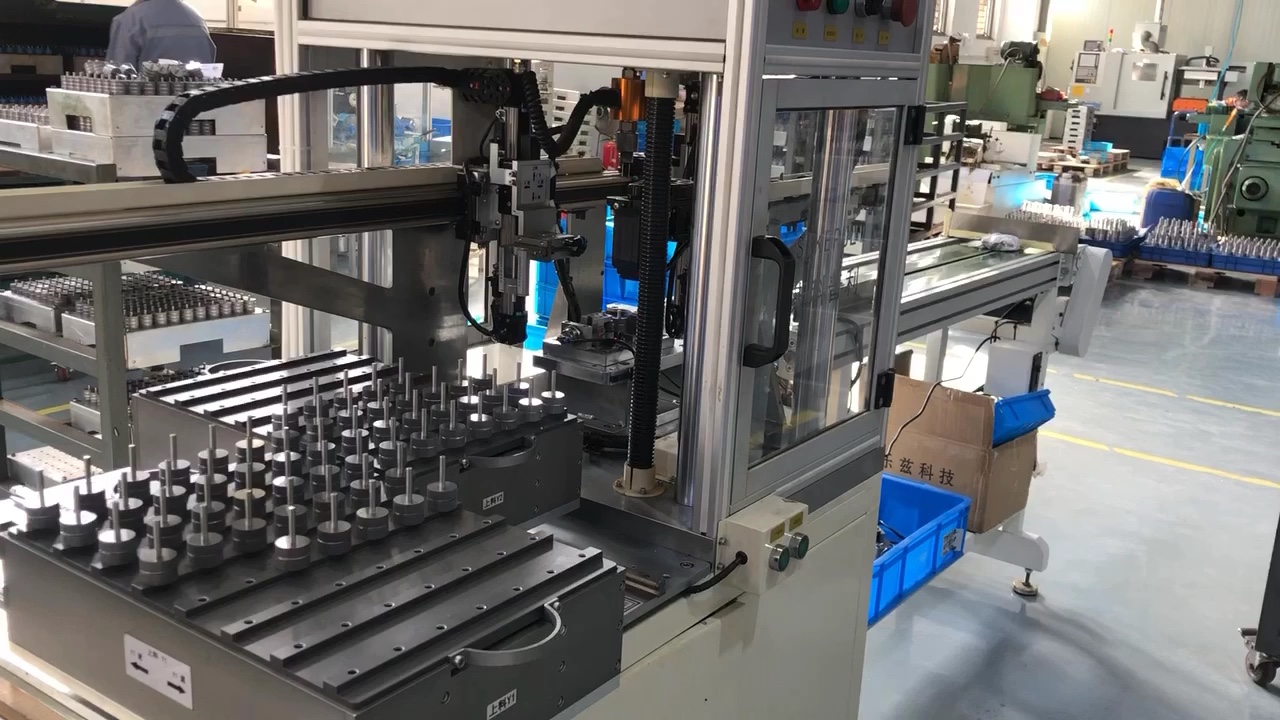
The fragility of modern modular components presents a fundamental challenge that extends far beyond simple packaging considerations, demanding protective case designs that can withstand the extreme forces encountered during transportation, handling, and storage while maintaining precise dimensional tolerances and environmental isolation. These components, often featuring delicate electronic circuits, precision-machined surfaces, or sensitive optical elements, require protection strategies that address multiple failure modes simultaneously without compromising accessibility or functionality.
The evolution of modular component design has created increasingly sophisticated systems where individual modules must maintain exact specifications while enduring the harsh realities of real-world deployment. Microscopic contamination, temperature fluctuations, mechanical vibrations, and impact forces all represent potential threats that can cascade through entire systems if protective measures fail. Understanding these threat vectors requires comprehensive analysis of how different failure modes interact and compound over time, creating cumulative damage that may not become apparent until critical system failures occur.
Traditional protective packaging approaches often fail to address the unique challenges presented by modular components, where conventional cushioning materials and rigid enclosures may provide adequate protection for simple items but cannot accommodate the complex geometries, thermal requirements, and electromagnetic sensitivities inherent in advanced modular systems. The need for specialized protective case designs has driven innovation in materials science, mechanical engineering, and environmental control systems, creating solutions that can maintain component integrity under extreme conditions while preserving the modularity that makes these systems valuable.
Mechanical Isolation and Dynamic Response Control
The mechanical isolation of fragile modular components requires sophisticated understanding of how vibration, shock, and impact forces propagate through protective case structures and affect sensitive internal components. Simple foam padding or bubble wrap may provide basic cushioning, but these materials often exhibit frequency-dependent behavior that can actually amplify harmful vibrations at resonant frequencies, potentially causing more damage than rigid mounting systems.
Advanced isolation systems utilize tuned mass dampers, viscoelastic materials, and multi-stage suspension designs that can effectively attenuate mechanical disturbances across broad frequency ranges. These systems must be carefully engineered to provide consistent isolation performance despite variations in load configuration, environmental conditions, and aging effects that can degrade isolation effectiveness over time. The design of these isolation systems requires detailed understanding of the dynamic characteristics of both the protective case structure and the components being protected.
The interaction between protective case geometry and isolation system performance creates complex optimization challenges where modifications to improve protection against one type of mechanical disturbance may compromise performance in other areas. Finite element analysis and experimental validation become essential tools for developing case designs that can achieve optimal isolation performance while maintaining practical constraints related to size, weight, and cost. These analysis methods enable exploration of design alternatives that would be impractical to evaluate through physical testing alone.
Modular component configurations add additional complexity to mechanical isolation requirements, as components may need to be accessed, reconfigured, or replaced while maintaining protection for other system elements. The design of protective cases for modular systems must accommodate these operational requirements while ensuring that mechanical isolation performance is not compromised during reconfiguration operations. This often requires innovative mechanical designs that can provide reliable protection while enabling rapid access to individual components.
Environmental Barriers and Contamination Control
The environmental challenges faced by fragile modular components extend beyond simple moisture and dust protection to encompass complex interactions between temperature, humidity, chemical exposure, and electromagnetic interference. These environmental factors can interact in unexpected ways, creating failure modes that may not be apparent when individual factors are considered in isolation. Understanding these interactions becomes critical for developing protective case designs that can maintain component integrity across diverse operating environments.
Hermetic sealing technologies provide the ultimate protection against environmental contamination, but achieving reliable hermetic seals in modular systems presents significant challenges related to component accessibility, thermal expansion, and seal integrity over multiple opening cycles. Advanced sealing systems must accommodate thermal cycling, mechanical stress, and aging effects while maintaining barrier performance that can prevent contamination ingress at the molecular level. The selection of sealing materials and design configurations requires careful consideration of chemical compatibility, temperature stability, and mechanical durability.
Positive pressure systems offer an alternative approach to contamination control that can provide excellent protection while maintaining component accessibility. These systems use filtered air or inert gas supplies to maintain slight positive pressure within protective cases, preventing contamination ingress while allowing for component access without complete environmental isolation. The design of positive pressure systems requires sophisticated understanding of fluid dynamics, filtration technology, and control systems that can maintain optimal pressure differentials under varying conditions.
The integration of environmental control systems with modular component protective cases creates opportunities for active environmental management that can optimize conditions for specific component types while maintaining overall system protection. Climate control systems can regulate temperature and humidity levels, while specialized atmosphere control systems can maintain oxygen-free environments for components sensitive to oxidation. These integrated approaches to environmental control require careful system design that balances protection effectiveness with practical constraints related to power consumption, maintenance requirements, and operational complexity.
Material Innovation and Structural Optimization
The development of advanced protective case materials has revolutionized the possibilities for protecting fragile modular components, with new materials offering combinations of strength, weight, and specialized properties that were previously impossible to achieve. Carbon fiber composites, advanced polymers, and metal matrix composites provide structural capabilities that can withstand extreme mechanical loads while maintaining minimal weight penalties. These materials can be engineered with specific properties tailored to particular protection requirements, creating opportunities for optimization that extends beyond simple strength-to-weight ratios.
Additive manufacturing technologies enable production of protective case components with complex internal geometries that would be impossible to achieve through conventional manufacturing methods. These capabilities enable creation of integrated cooling channels, vibration-damping structures, and component-specific mounting features that can provide superior protection performance while reducing overall case complexity. The design freedom provided by additive manufacturing requires new approaches to structural optimization that can take advantage of these capabilities while maintaining manufacturing feasibility and cost-effectiveness.
Smart materials that can adapt their properties in response to environmental conditions or applied loads offer exciting possibilities for protective case applications. Shape-memory alloys can provide variable stiffness mounting systems that automatically adjust to changing load conditions, while magnetorheological fluids can create damping systems with electronically controlled characteristics. These adaptive materials enable protective cases that can optimize their protection performance for specific operating conditions while maintaining effectiveness across diverse environments.
The integration of sensing and monitoring capabilities into protective case materials creates opportunities for real-time assessment of component protection status and early warning of potential failures. Embedded sensors can monitor temperature, humidity, vibration levels, and structural integrity, providing data that can be used to optimize protection strategies and predict maintenance requirements. Organizations like eco systems inc have pioneered approaches to integrating environmental monitoring systems with protective case designs, creating solutions that can provide comprehensive protection while enabling proactive maintenance strategies.
Modular Architecture and Reconfiguration Strategies
The unique requirements of modular component systems demand protective case designs that can accommodate multiple component configurations while maintaining consistent protection performance across all possible arrangements. Traditional protective cases designed for specific component layouts become inadequate when components must be regularly reconfigured or replaced, requiring adaptive case designs that can provide effective protection regardless of internal component arrangement.
Modular protective case systems utilize standardized mounting interfaces and reconfigurable internal structures that can be adapted to different component configurations without compromising protection effectiveness. These systems must provide consistent mechanical isolation, environmental protection, and thermal management regardless of component arrangement, while enabling rapid reconfiguration that minimizes downtime and handling-related risks. The design of these modular systems requires careful consideration of interface standards, mechanical compatibility, and protection performance consistency.
The thermal management of modular component systems within protective cases presents unique challenges related to heat dissipation, thermal isolation, and temperature uniformity. Different component configurations may create dramatically different thermal loads and heat distribution patterns, requiring adaptive thermal management systems that can maintain optimal temperatures regardless of component arrangement. Advanced thermal management solutions may incorporate variable cooling capacity, reconfigurable heat flow paths, and intelligent thermal control systems that can optimize performance for specific component configurations.

Electromagnetic interference shielding in modular protective cases must address the complex interaction between different component configurations and electromagnetic field distributions. The effectiveness of shielding systems can be dramatically affected by component arrangement, cable routing, and case configuration, requiring sophisticated electromagnetic modeling and testing to ensure adequate protection across all possible system configurations. The design of adaptive shielding systems that can maintain effectiveness despite component reconfiguration presents ongoing challenges that require innovative approaches to electromagnetic compatibility.
Testing Protocols and Validation Methods
The validation of protective case designs for fragile modular components requires comprehensive testing protocols that can evaluate performance across multiple failure modes, environmental conditions, and component configurations. Traditional package testing methods may be inadequate for complex modular systems, where interactions between different components and protection systems can create failure modes that are not apparent in single-component testing scenarios.
Accelerated testing methods can simulate years of environmental exposure and mechanical stress in compressed time periods, enabling evaluation of long-term protection performance and identification of potential failure modes that may not be apparent in short-term testing. These methods must carefully replicate the actual stress conditions encountered in real-world applications while accounting for the complex interactions between different environmental factors and protection systems. The development of representative accelerated testing protocols requires detailed understanding of actual operating conditions and failure mechanisms.
Statistical approaches to protective case validation recognize that protection performance exhibits natural variability that must be characterized and controlled to ensure reliable protection across production volumes. Design of experiments methods can efficiently evaluate the effects of different design parameters and manufacturing variations on protection performance, enabling optimization of case designs for both nominal performance and robustness to variations. These statistical methods become particularly important for modular systems where component variations can affect protection requirements.
Field testing and real-world validation provide essential feedback for protective case design optimization, revealing failure modes and performance issues that may not be apparent in laboratory testing environments. The collection and analysis of field performance data enables continuous improvement of protection strategies and identification of emerging challenges that may require design modifications. Long-term field studies can provide insights into aging effects, maintenance requirements, and actual protection effectiveness that cannot be obtained through laboratory testing alone.
Conclusion
The design of protective cases for fragile modular components represents a complex engineering challenge that requires integration of mechanical engineering, materials science, environmental control, and systems engineering disciplines. The increasing sophistication of modular component systems, combined with demanding operational environments and reliability requirements, continues to push the boundaries of what is possible in protective case design.
Success in protective case design depends on understanding the complete system context in which components operate, recognizing that protection requirements extend beyond simple physical damage prevention to encompass thermal management, electromagnetic compatibility, and long-term reliability considerations. The modular nature of these systems adds additional complexity related to reconfiguration requirements, component variations, and interface compatibility that must be addressed through sophisticated design approaches.
The evolution of materials, manufacturing technologies, and environmental control systems continues to expand the possibilities for protective case design, enabling solutions that can provide superior protection performance while maintaining the accessibility and flexibility that make modular systems valuable. However, the increasing complexity of these protection systems requires careful consideration of reliability, maintainability, and cost-effectiveness to ensure that protective solutions enhance rather than compromise overall system performance.
As modular component systems continue to evolve toward higher performance levels and more demanding applications, protective case design will remain a critical enabling technology that determines the practical limits of system reliability and operational effectiveness. The development of next-generation protection solutions, combined with improved understanding of failure mechanisms and environmental interactions, will continue to expand the boundaries of what is possible in modular component system deployment.





Leave a Reply